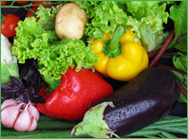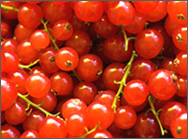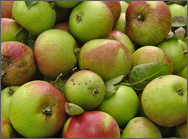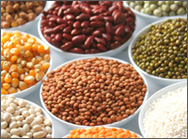Feel let down by your dermatologist in treating your Rosacea?
Tried all the Rosacea diets without improvement?
Has your confidence been wrecked by this condition?
At Nutritional Essence we appreciate that every person is different, and every case of Rosacea and the individual is unique, which is why it is so important to have an individualised programme.
There is no known cure for Rosacea, however as in other conditions much can be done to alleviate and control the condition. As an analogy, an individual diagnosed with Celiac disease is not ‘cured’ of the disease, but with the total exclusion of gluten from the diet, the Celiac can enjoy his health and lead a normal life. And so it is with Rosacea.
In our experience Rosacea responds most significantly when addressed by a combination of dietary changes, supplemental and herbal therapies to reduce internal contributors of inflammation, regular IPL treatments and some lifestyle changes. Clients who addressed their Rosacea using this specific combination had the most gains.
TIPS:
Lifestyle
- Identify your personal tripwires / triggers, basically the causes of your flushing episodes. These should be avoided as much as is humanly possible.
- Cleanliness is important; treat your skin with care, use lukewarm water and a mild natural soap (personal recommendations are given where washing the face causes flushing). Avoid washing your face with any temperature extremes (both hot and cold). Dry the skin carefully, patting it instead of rubbing it. The quality of the water you use to wash with should also be addressed if washing is a particular trigger for you.
- Choose your clothing and the material it is made from carefully, Choose clothing made from cotton (organic cotton is even better!), and avoid clothes that raise the local temperature around your face (e.g. polo neck jumpers), also avoid the synthetic fibres (rayon, nylon etc) as these do not ‘breathe’ as cotton does.
- Use adequate sun protection on a daily basis, ensure that it is non-irritating and hypo-allergenic, always test on a small area of skin before use.
- Avoid temperature extremes: getting overheated, moving from one extreme temperature to another (hot to cold e.g.), by moving on a gradient scale you can help reduce the effect.
- Choosing makeup / cosmetics: choose natural, water based ones.
- Humidity: whilst you may have no control over this outdoors, or indeed in an office or work-place, if you use a humidifier at home, use a cool mist one only.
- Use of topical steroid creams can help to relieve the symptom but do not address the underlying causes. You should only use these under medical supervision.
Diet
- There are foods you should include in your diet and some foods (triggers) you should avoid. Examples of some trigger foods are: certain fruits (especially common are citrus fruits), alcohol, wine, coffee and drinks with too much caffeine, chocolate, processed foods, foods with added salt and/or sugar, and spicy hot foods.
- Identify food allergies and or sensitivities, these may not necessarily cause a flushing episode, but rather a delayed reaction in the immune system which results in inflammation and excessive heat production. Some common symptoms of food sensitivity are: drowsiness during the day, sinus problems, bloating 1-3 hours after eating, migraine headaches, unexplained fatigue and dark circles under the eyes. If you suspect you have food sensitivities you should mention it when completing our questionnaire.
Digestive Problems
- The digestive system is a major source of inflammation if it is not functioning optimally. In Rosacea digestive problems are commonly present. Optimal digestive function is vital in addressing Rosacea. Some foods assist and other foods hinder digestive well-being. Digestive Function Assessment is the first step in our Nutritional approach to Rosacea. You may find reading the Digestive Health page helps you to understand why this is essential. If you have Rosacea and wish to take that first step in addressing your digestion, go straight to our Digestive Function Assessment form click here: Digestive Questionnaire.
Eating natural foods helps Rosacea sufferers avoid triggers
- Many triggers will be avoided just by changing to healthy eating habits.
- Organically grown produce is best for a number of reasons, and diet should contain raw fruits, vegetables, nuts, seeds, (excluding any varieties identified as triggers) as well as oily fish and whole grains.
- The benefits of Green Tea are well established and can be beneficial to anyone suffering inflammation. Green Tea has antioxidant, antibacterial, and fat-burning properties. Optimised preparation of green tea is essential: the quality of the water used, and make sure it’s boiling hot for the steeping stage.
- Avoid/minimise intake of saturated fats and certain dairy products (also high in saturated fat which is pro-inflammatory).
- You should allow hot drinks to cool before drinking.
- A meal routine is important because digestion works best when it occurs at regular intervals and meal sizes are appropriate. Skipping meals, for instance, will lead to overeating at the next meal, and poor food choices due to excessive hunger, which are both very burdensome for the organs of digestion. It takes about twenty minutes for the digestive system to register that the stomach is full; it is therefore wise to chew your food thoroughly in a relaxed manner.
- A regular system of detoxification, such as a 2-day mono-fast once a month, can be very beneficial, but only under the supervision of a Nutritional Therapist because not everyone is healthy enough to follow such a programme without ill effects.
Eating foods close to nature can help in two ways
- Foods Close To Nature provide nutrients in the ratios that mirror nutrient ratios in the cells of the human body. Foods furthest from nature (processed) tend to have nutrients in unnatural ratios.
- Eating a wide variety of Foods Close To Nature provides the greatest benefit because variety supplies all nutrients. Natural foods, especially when eaten raw, also provide enzymes that assist our digestive system in breaking them down into molecules small enough for us to absorb them. The enzymes provided by these foods can also, in some cases, be ‘recycled’. Therefore foods closest to nature can be considered as ‘contributors’, and those furthest from nature deemed ‘Nutrient Robbers’.
Some natural foods beneficial in controlling Rosacea
- Cucumber. In 1597, an English herbalist called John Gerard wrote a General History of Plants and suggested that eating a soup containing cucumber and oatmeal three times a day would ‘combat a fiery and pimply complexion’.Cucumber sandwiches were often eaten at Victorian ‘afternoon tea’, interestingly, both cucumbers and certain types of tea (typically green tea) are known to reduce the effects of Rosacea. As already mentioned, tea has antibiotic and antibacterial properties.
- Celery. This delicious, versatile, simple to prepare vegetable provides such an abundance of nutrients beneficial for Rosacea. It has excellent mineral ratios: Potassium : Sodium ratio (3:1 respectively), Calcium : Magnesium (almost 4:1); it has an overall cooling effect, is high in fibre, (helps feed beneficial bacteria and keep the digestive system ‘in motion’), and high in antioxidants to help combat free radicals.
- Apple (especially crab apple). One of the best fast foods (so long as it is not a personal trigger for you). Most people are aware of the saying ‘An Apple A Day Keeps The Doctor Away’, well apples can help Rosacea because they are cooling, cleansing, detoxifying and they provide antioxidant nutrients.
- Blueberries. High in antioxidants, great in healthy shakes and for ‘food-on-the-go’
- Zucchini. A cooling vegetable, great in a quick stir-fry.
- Pak (or Bok) Choy. Another great cooling vegetable useful for quick stir-fry dishes.
- Oily Fish. Source of omega-3; the most important essential fatty acid for Rosacea (regulators of inflammation).
Food preparation
Firstly, always thoroughly wash fruits & vegetables before use.
The way in which foods are prepared effects the nutritional value of that food, and it’s effect on your body once you eat it. In some circumstances food preparation can also reduce the trigger effect of a particular food. As a general rule you should consume some raw vegetables everyday and some fruits (avoiding triggers), and some cooked foods. We suggest quick stir-fry on medium heat, short duration steaming of vegetables to give a crisp texture and maintain nutrient content, and low heat cooking methods such as simmering. Avoid ruining your food with pressure-cooking, baking, high-temperature boiling, and deep-frying.
IPL (Intense Pulsed Light)
Whilst lifestyle and nutrition are an essential and important part of any treatment, they are only a part of the treatment. We strongly recommend a combination of Nutritional Therapy to address underlying contributing factors together with IPL therapy to address the structurally damaged vessels, and the overall redness that accompanies them. When surface and feeder vessels are targeted with IPL, at the various levels of the dermis, the potential of further capillary breakage and even flushing is markedly reduced.
We work closely with The Pulse Light Clinic in London specifically and exclusively, because we value their extensive experience and success in treating Rosacea. We recommend you take advantage of their free first consultation if you have decided that you really want to do something about your Rosacea.
Use this link to contact The Pulse Light Clinic and make an appointment http://www.pulselightclinic.co.uk/contact-us




